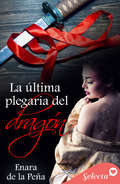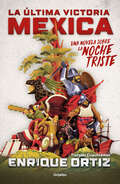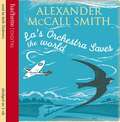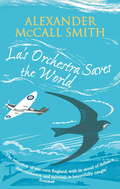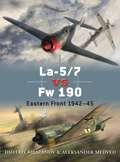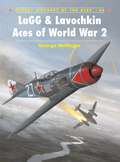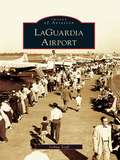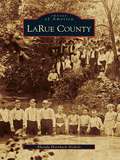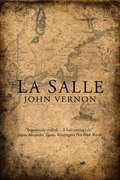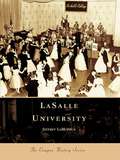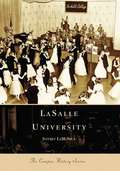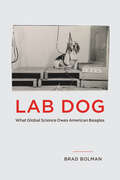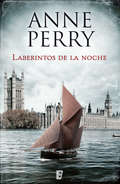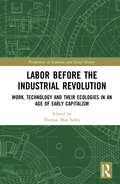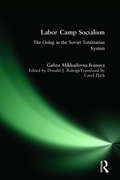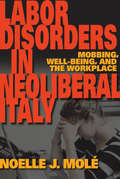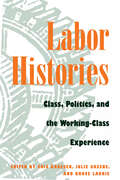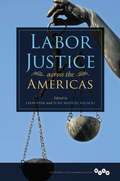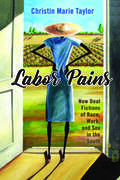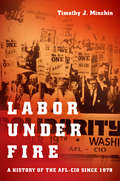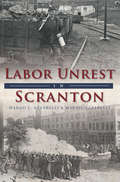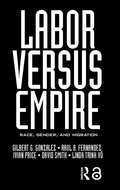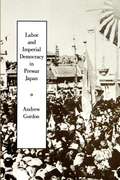- Table View
- List View
La última plegaria del dragón
by Enara de la PeñaUn silencio de treinta años, un secreto que marca dos historias de amor. ¿Puede el amor tener una segunda oportunidad en mitad de una guerra Yakuza? Una apasionante historia de amor, acción y sensualidad. Tokio. Era Taisho Nora abandona su vida en Londres para perseguir el sueño de enseñar en Japón. Aunque los fantasmas de su pasado continúan acosándola, lo último que se imagina es que su alumno será la clave en la lucha de las dos principales familias de la mafia japonesa. Entre garitos de apuestas y locales clandestinos, Ryu, un yakuza frío y solitario, pelea por recuperar el orgullo de los Maruyama. Hasta que se convierte en el guardaespaldas de un niño de cinco años y, casi sin darse cuenta, también de su irritante profesora. En un improvisado viaje de Nueva York a Tokio, Cole trata de averiguar quién es en realidad. Con suerte y la ayuda del hombre de hielo Kimitake, su atractivo traductor, comenzará una investigación que sacará a la luz el misterio de la desaparición de su madre. Dos historias de amor que se entrelazan en una ciudad gobernada por la tradición y la imparable fuerza del progreso. Cautivados por los cerezos en flor, cuatro vidas quedarán para siempre unidas en una aventura por los bajos fondos de Asakusa donde nada ni nadie es lo que parece.
La última victoria mexica: Una novela sobre la noche triste
by Enrique OrtizEL IMPERIO MEXICA TENDRÁ QUE DEMOSTRAR SU PODER Y GRANDEZA ANTES DE QUE SEA DEMASIADO TARDE… Tenochtitlan, 1520. El buen trato que Motecuhzoma ha concedido a los castellanos desde su llegada provoca sospechas entre los mexicas. Como gesto de confianza, el huey tlahtoani entrega varias doncellas de noble cuna a los forasteros para que la armonía siga reinando en el imperio. Una de ellas es Citlalli, joven aguerrida que deberá complacer y obedecer las órdenes de Gonzalo, capitán de rodeleros. Convencida de la importancia de su papel para mantener la paz, Citlalli faltará a la promesa que le hizo a su amado Cuauhtli, un destacado guerrero tenochca de origen plebeyo con quien planeaba huir para salvar su amor. Sin embargo, la paz es solo aparente y muy endeble. Cuando Pedro de Alvarado aprovecha la ausencia de Cortés para perpetrar una matanza en el Templo Mayor, cualquier posible alianza quedará anulada y los mexicas deberán luchar por mantener su hegemonía y su honor. Conflictos políticos, batallas épicas, intrigas y romance son los protagonistas de La última victoria mexica, una ambiciosa novela en la que el rigor histórico y la ficción se entrelazan para ofrecer uno de los relatos más apasionantes sobre los días previos a la Noche Triste.
La única puerta azul
by Joan FallonImagina que eres una niña de doce años; tienes una vida feliz y una familia que te ama, luego, poco a poco, tu vida se desintegra y te encuentras sola, a miles de kilómetros de tu hogar. Es septiembre de 1940, Maggie y sus jóvenes hermanos, Grace y Billy, están viviendo en el East End londinense con su madre. Su padre ha muerto en Dunquerque y su madre ingresa en el hospital para tener a su cuarto hijo, dejando a los niños al cuidado de una vecina. En uno de los peores ataques aéreos de la guerra su casa es destrozada y su vecina muere. Desconcertados y asustados, los chicos vagan por las calles hasta que son acogidos por unas monjas. Pero sus problemas no han terminado; nadie puede dar con su madre y, dados por huérfanos, son enviados como niños migrantes a Australia. La novela narra sus aventuras en su nuevo país, la nostalgia, el dolor de su corazón cuando Billy es separado de sus hermanas y la soledad de su vida en un frío e insensible orfanato. Finalmente, los niños rehacen sus vidas separados, pero Maggie todavía está convencida de que su madre está viva y una vez es lo suficientemente mayor comienza a buscarla. Esta novela está basada en las experiencias de gente real y refleja la actitud de la época hacia los niños de la migración durante y después de la Segunda Guerra Mundial.
La's Orchestra Saves The World
by Alexander McCall SmithWith a failed marriage behnd her, La -- short for Lavender -- moves to the Suffolk countryside to nurse her broken heart on the eve of the Second World War. Lonely and at a loss, a friend encourages her to bring the villagers and the men from the local airbase together by forming an amateur orchestra. One of her musician recruits is Feliks, a handsome and enigmatic Polish refugee. A friendship begins to blossom between the two, and La finds her feelings stirring to life again.Poignant, tender and inspiring, La's Orchestra Saves the World celebrates the power of love and friendship in the collective tragedy of war, as well as the extraordinary healing power of music.
La's Orchestra Saves The World: A Novel
by Alexander McCall SmithWith a failed marriage behnd her, La -- short for Lavender -- moves to the Suffolk countryside to nurse her broken heart on the eve of the Second World War. Lonely and at a loss, a friend encourages her to bring the villagers and the men from the local airbase together by forming an amateur orchestra. One of her musician recruits is Feliks, a handsome and enigmatic Polish refugee. A friendship begins to blossom between the two, and La finds her feelings stirring to life again.Poignant, tender and inspiring, La's Orchestra Saves the World celebrates the power of love and friendship in the collective tragedy of war, as well as the extraordinary healing power of music.
La-5/7 vs Fw 190
by Jim Laurier Dmitriy KhazanovSoviet fighter aviation suffered terribly at the hands of the Jagdwaffe in the first year of the war in the east, and with the arrival of JG 51 and its Fw 190s on the Stalingrad Front in September 1942 things only got worse for the hard-pressed Red Army Air Force pilots. However, help was on its way in the form of the re-engined LaGG-3 fighter, which was fitted with a powerful air-cooled M-82 radial engine. Designated the La-5, the new fighter was capable of withstanding more punishment than the fragile LaGG-3, and it was also appreciably faster and had a greater rate of climb. It was more of a handful to fly, however, but the new generation of better trained pilots who were led into combat by the survivors of 1941-42 quickly found the La-5 (and, later, the improved La-7) very much to their liking. Arriving in the frontline in August 1942, the new Lavochkin fighters soon found themselves pitted into action on the Central Sector against the equally new Fw 190As of JG 51. The first clashes took place in November of that year, and from then on the Focke-Wulf fighter would regularly clash with its counterpart from Lavochkin.From the Trade Paperback edition.
LaGG & Lavochkin Aces of World War 2
by George MellingerThis book examines the LaGG family of fighters, that were amongst the first modern piston-engined interceptors made available to the Red Air Forces in early 1941and proved far better fighters than their radial-engined predecessors. Despite technical maladies and political interference from Moscow, the LaGG-3 matured into an effective fighter when flown to its strengths at low level. Many early Soviet aces were weaned on the LaGG-3, and if they survived the early massacres of 1941-42, they went on to fly the Lavochkin family of fighters. Indeed, the Lavochkin La-3, -5 and -7 were the fighters of choice for Heroes of the Soviet Union such as Ivan Kozhedub, who claimed 62 kills.
LaGuardia Airport (Images of Aviation)
by Joshua StoffConstructed closer to Manhattan than the commercially unsuccessful Floyd Bennett Field, LaGuardia Airport was conceived in the mid-1930s as New York City mayor Fiorello LaGuardia realized the need for a great airport for one of the world's great cities. Originally known as New York Municipal Airport, the popular airport soon had its name changed to recognize LaGuardia's enormous contribution to the project. At the time of its opening in 1939, it was the largest and most advanced commercial airport in the world with terminals considered art deco masterpieces. Although a very large airport for the era in which it was built, by the late 1940s it was the world's busiest airport and clearly too small for the increasing amount of air traffic. Through the years its runways were lengthened and facilities were improved to handle larger and faster aircraft. Still one of America's busiest airports, LaGuardia has witnessed the steady progress of American commercial aviation, from flying boats to jetliners.
LaRue County (Images of America)
by Rhonda Hornback NicholsIn 1843, LaRue County was named after John LaRue, an early settler in the area. Hodgenville, the county's largest town, was established in 1818 and later became the seat in 1843. LaRue County is best known as the birthplace and childhood home of Abraham Lincoln; he was born on February 12, 1809, at the Sinking Spring Farm. In 1909, in honor of Lincoln's centennial birthday, New York sculptor Adolph A. Weinmann created a life-size statue of the 16th president, which still stands in the Hodgenville square. Today the Abraham Lincoln Birthplace National Historic Site and Abraham Lincoln Boyhood Home at Knob Creek are popular tourist attractions. From a national icon to the local farmer, generations of people have called LaRue County home and have nurtured a strong sense of community.
LaSalle
by John VernonThe Sieur de La Salle's story begins in 1682, when he sets out with twenty-two Frenchmen, eighteen Indians, and his always-grumbling, epileptic cartographer, Pierre Goupil, to chart the length of the Mississippi River. In the course of this breathtaking novel, we see early America as seldom before.<P><P> This is a world as foreign to us as any, for, as John Vernon points out, “the map of North America, so etched in our imaginations, with the great furrow of the Mississippi River running down the center of it, did not yet exist for these colonists.” For them, North America is a vivid and dangerous dream of hardship, madness, and poetry. <P> Not simply an adventure story, La Salle is an epistolary novel in the best eighteenth-century tradition. John Vernon has ingeniously molded historical facts into a set of diary entries by La Salle and Goupil. In their often conflicting and always vigorous styles, the two describe their journey into the wilderness and a world in which the reason and religion of Europe have no place. <P> First published in 1986, La Salle is a classic of American historical fiction
LaSalle University
by Jeffrey LamonicaThe history of LaSalle University, located in Philadelphia, dates back nearly 150 years. The institution has occupied various locations throughout the city, including the Bouvier Family Mansion from 1886 to 1930. Original photographs of Archbishop James Wood and the Christian Brothers, who founded LaSalle College in 1863, are among the featured images portraying the personalities who shaped LaSalle. Tom Gola and the 1954 NCAA men's basketball championship team and Tom Curley, cocreator of USA Today, are among LaSalle's star athletes and prominent graduates. LaSalle University places the school's story into the context of the history of the United States by presenting photographs that capture the essence of World War II, the cold war, the 1960s, and other key moments in American history.
LaSalle University (The Campus History Series)
by Jeffrey LamonicaThe history of LaSalle University, located in Philadelphia, dates back nearly 150 years. The institution has occupied various locations throughout the city, including the Bouvier Family Mansion from 1886 to 1930. Original photographs of Archbishop James Wood and the Christian Brothers, who founded LaSalle College in 1863, are among the featured images portraying the personalities who shaped LaSalle. Tom Gola and the 1954 NCAA men's basketball championship team and Tom Curley, cocreator of USA Today, are among LaSalle's star athletes and prominent graduates. LaSalle University places the school's story into the context of the history of the United States by presenting photographs that capture the essence of World War II, the cold war, the 1960s, and other key moments in American history.
Lab Dog: What Global Science Owes American Beagles
by Brad BolmanTracing over a century of transformation in the relationship between humans and our “best friend,” from hunting companion to laboratory commodity to modern pet. Intrepid, docile, and cloaked in coats of white, black, and tan, beagles were one of the most popular breeds in the United States in the twentieth century. From Snoopy to dog shows, many Americans loved and identified with beagles. But during the same period, as scientists searched for a standard research dog, beagles emerged as something else: an ideal animal for laboratory experimentation. In Lab Dog, historian Brad Bolman explains how the laboratory dog became a subject of intense focus for twentieth-century scientists and charts the beagle’s surprising trajectory through global science. Following beagles as they moved from eugenics to radiobiology, pharmaceutical testing to Alzheimer’s studies, Lab Dog sheds new light on pivotal stories of twentieth-century science, including the Manhattan Project, tobacco controversies, contraceptive testing, and behavioral genetics research. Bolman shows how these experiments shaped our understanding of dogs as intelligent companions who deserve moral protection and socialization—and in some cases, daily medication. Compelling and accessible, Lab Dog tells the thorny story of the participation of beagles in science, including both their sacrifices and their contributions, and offers a glimpse into the future of animal experimentation.
Laberintos de la noche
by Anne PerryWilliam Monk y su inseparable compañera Hester, enfrentados a dos científicos convertidos en asesinos. Los hermanos Rand -Magnus, un médico astuto, y Hamilton, un genio de la química- buscan obsesivamente una cura para lo que por entonces se conoce como la «enfermedad de la sangre blanca». En un anexo del Hospital de Greenwich, la enfermera Hester Monk está atendiendo al adinerado Bryson Radnor, uno de los pacientes moribundos de los hermanos Rand, cuando topa con tres niños débiles y aterrorizados, y se da cuenta con horror de que los dos científicos los han comprado para realizar experimentos con ellos. Los Rand están a punto de conseguir una cura milagrosa, y no pueden correr el riesgo de que se conozcan sus experimentos... Antes de que Hester pueda revelar el secreto, ella también cae prisionera. Mientras el comandante Wiliam Monk y sus fieles buscan a Hester en las oscuras calles londinenses y la bella campiña inglesa, el tiempo se agota para la valiente enfermera y los niños a los que intenta proteger. La crítica ha dicho...«Intrincado y lleno de suspense.»Historical Novels Review «Nuevamente, Anne Perry evoca de forma meticulosa el Londres de la era victoriana. Esta es una de sus mejores novelas, y ella continúa explorando los oscuros impulsos que acechan nuestra alma.»Providence Journal «Describe el Londres de la época victoriana en toda su corrupta gloria.»Bookreporter «La disfrutarán tanto los fans de la serie como los nuevos lectores.»Deseret News «Las tramas de las novelas de Anne Perry están maravillosamente elaboradas.»The New York Times «La investigación culmina en un juicio que deja sin aliento.»Booklist
Labor Before the Industrial Revolution: Work, Technology and their Ecologies in an Age of Early Capitalism (Perspectives in Economic and Social History)
by Thomas Max SafleyOne cannot conceive of capitalism without labor. Yet many of the current debates about economic development leading to industrialization fail to directly engage with labor at all. This collection of essays strives to correct this oversight and to reintroduce labor into the great debates about capitalist development and economic growth before the Industrial Revolution. By attending to the effects of specific regulatory, technological, social and physical environments on producers and production in a set of specific industries, these essays use an “ecological” approach that demonstrates how productivity, knowledge and regime changed between 1400 and 1800. This book will be of interest to researchers in history, especially labor history, and European economic development.
Labor Camp Socialism: The Gulag in the Soviet Totalitarian System (The\new Russian History Ser.)
by Donald J. Raleigh Galina Mikhailovna Ivanova Galina Mikhailovna Carol A. FlathThis is the first historical survey of the Gulag based on newly accessible archival sources as well as memoirs and other studies published since the beginning of glasnost.Over the course of several decades, the Soviet labor camp system drew into its orbit tens of millions of people -- political prisoners and their families, common criminals, prisoners of war, internal exiles, local officials, and prison camp personnel. This study sheds new light on the operation of the camp system, both internally and as an integral part of a totalitarian regime that "institutionalized violence as a universal means of attaining its goals". In Galina Ivanova's unflinching account -- all the more powerful for its austerity -- the Gulag is the ultimate manifestation of a more pervasive and lasting distortion of the values of legality, labor, and life that burdens Russia to the present day.
Labor Disorders in Neoliberal Italy
by Noelle J. MoléPsychological harassment at work, or "mobbing," has become a significant public policy issue in Italy and elsewhere in Europe. Mobbing has given rise to specialized counseling clinics, a new field of professional expertise, and new labor laws. For Noelle J. Molé, mobbing is a manifestation of Italy's rapid transition from a highly protectionist to a market-oriented labor regime and a neoliberal state. She analyzes the classification of mobbing as a work-related illness, the deployment of preventive public health programs, the relation of mobbing to gendered work practices, and workers' use of the concept of mobbing to make legal and medical claims, with implications for state policy, labor contracts, and political movements. For many Italian workers, mobbing embodies the social and psychological effects of an economy and a state in transition.
Labor Histories: Class, Politics, and the Working-Class Experience (Working Class in American History)
by Peter Rachleff Gunther Peck James R. Barrett Tera W. Hunter Shelton Stromquist Bruce Laurie Reeve Huston Cecelia Bucki Kathryn J Oberdeck Kimberley L. Phillips Ileen A DeVaultIs class outmoded as a basis for understanding labor history? This collection emphatically answers, "No!" These thirteen essays delve into subjects like migrant labor, religion, ethnicity, agricultural history, and gender. Written by former students of preeminent labor figure and historian David Montgomery, the works advance the argument that class remains indispensable to the study of working Americans and their place in the broad drama of our shared national history.
Labor Justice across the Americas
by Leon Fink Juan PalacioOpinions of specialized labor courts differ, but labor justice undoubtedly represented a decisive moment in worker 's history. When and how did these courts take shape? Why did their originators consider them necessary? Leon Fink and Juan Manuel Palacio present essays that address these essential questions. Ranging from Canada and the United States to Chile and Argentina, the authors search for common factors in the appearance of labor courts while recognizing the specific character of the creative process in each nation. Their transnational and comparative approach advances a global perspective on the various mechanisms for regulating industrial relations and resolving labor conflicts. The result is the first country-by-country study of its kind, one that addresses a defining shift in law in the first half of the twentieth century. Contributors: Rossana Barragán Romano, Angela de Castro Gomes, David Díaz-Arias, Leon Fink, Frank Luce, Diego Ortúzar, Germán Palacio, Juan Manuel Palacio, William Suarez-Potts, Fernando Teixeira da Silva, Victor Uribe-Urán, Angela Vergara, and Ronny J. Viales-Hurtado.
Labor Law, Industrial Relations, and Employee Choice
by Richard N. Block John Beck Daniel H. KrugerDiscusses workplace conditions of the 1990s.
Labor Pains: New Deal Fictions of Race, Work, and Sex in the South (Margaret Walker Alexander Series in African American Studies)
by Christin Marie TaylorFrom the 1930s to the 1960s, the Popular Front produced a significant era in African American literary radicalism. While scholars have long associated the black radicalism of the Popular Front with the literary Left and the working class, Christin Marie Taylor considers how black radicalism influenced southern fiction about black workers, offering a new view of work and labor.At the height of the New Deal era and its legacies, Taylor examines how southern literature of the Popular Front not only addressed the familiar stakes of race and labor but also called upon an imagined black folk to explore questions of feeling and desire. By poring over tropes of black workers across genres of southern literature in the works of George Wylie Henderson, William Attaway, Eudora Welty, and Sarah Elizabeth Wright, Taylor reveals the broad reach of black radicalism into experiments with portraying human feelings.These writers grounded interrelationships and stoked emotions to present the social issues of their times in deeply human terms. Taylor emphasizes the multidimensional use of the sensual and the sexual, which many protest writers of the period, such as Richard Wright, avoided. She suggests Henderson and company used feeling to touch readers while also questioning and reimagining the political contexts and apparent victories of their times. Taylor shows how these fictions adopted the aesthetics and politics of feeling as a response to New Deal–era policy reforms, both in their successes and their failures. In effect, these writers, some who are not considered a part of an African American protest tradition, illuminated an alternative form of protest through poignant paradigms.
Labor Under Fire: A History of the AFL-CIO since 1979
by Timothy J. MinchinFrom the Reagan years to the present, the labor movement has faced a profoundly hostile climate. As America's largest labor federation, the AFL-CIO was forced to reckon with severe political and economic headwinds. Yet the AFL-CIO survived, consistently fighting for programs that benefited millions of Americans, including social security, unemployment insurance, the minimum wage, and universal health care. With a membership of more than 13 million, it was also able to launch the largest labor march in American history--1981's Solidarity Day--and to play an important role in politics.In a history that spans from 1979 to the present, Timothy J. Minchin tells a sweeping, national story of how the AFL-CIO sustained itself and remained a significant voice in spite of its powerful enemies and internal constraints. Full of details, characters, and never-before-told stories drawn from unexamined, restricted, and untapped archives, as well as interviews with crucial figures involved with the organization, this book tells the definitive history of the modern AFL-CIO.
Labor Unrest in Scranton
by Marnie Azzarelli Margo L. AzzarelliOn an August morning in 1877, a dispute over wages exploded between miners and coal company owners. A furious mob rushed down Lackawanna Avenue only to be met by a deadly hail of bullets. With its vast coal fields, mills and rail lines, Scranton became a hotbed for labor activity. Many were discontented by working endless and dangerous hours for minimal pay. The disputes mostly ended in losses for labor, but after a strike that lasted more than one hundred days, John Mitchell helped win higher wages, a shorter workday and better working conditions for coal miners. The legendary 1902 Anthracite Coal Strike Commission hearings began in Scranton, where famed lawyer Clarence Darrow championed workers' rights. Local authors Margo and Marnie Azzarelli present this dramatic history and its lasting legacy.
Labor Versus Empire: Race, Gender, Migration
by David Smith Gilbert G. Gonzalez Linda Trinh Võ Raul A. Fernandez Vivian PriceThe essays in this collection address issues significant to labor within regional, national and international contexts. Themes of the chapters will focus on managed labor migration; organizing in multi-ethnic and multi-national contexts; global economics and labor; global economics and inequality; gender and labor; racism and globalization; regional trade agreements and labor.
Labor and Imperial Democracy in Prewar Japan
by Andrew GordonLabor and Imperial Democracy in Prewar Japan examines the political role played by working men and women in prewar Tokyo and offers a reinterpretation of the broader dynamics of Japan's prewar political history. Gordon argues that such phenomena as riots, labor disputes, and union organizing can best be understood as part of an early twentieth-century movement for "imperial democracy" shaped by the nineteenth-century drive to promote capitalism and build a modern nation and empire. When the propertied, educated leaders of this movement gained a share of power in the 1920s, they disagreed on how far to go toward incorporating working men and women into an expanded body politic. For their part, workers became ambivalent toward working within the imperial democratic system. In this context, the intense polarization of laborers and owners during the Depression helped ultimately to destroy the legitimacy of imperial democracy. Gordon suggests that the thought and behavior of Japanese workers both reflected and furthered the intense concern with popular participation and national power that has marked Japan's modern history. He points to a post-World War II legacy for imperial democracy in both the organization of the working class movement and the popular willingness to see GNP growth as an index of national glory. Importantly, Gordon shows how historians might reconsider the roles of tenant farmers, students, and female activists, for example, in the rise and transformation of imperial democracy.
